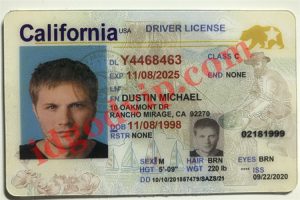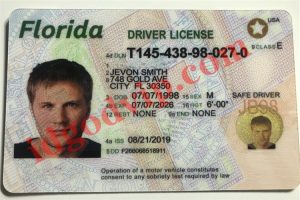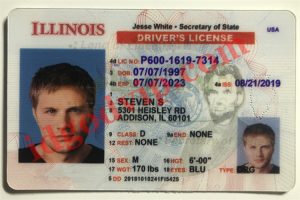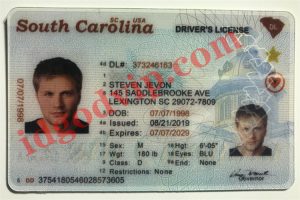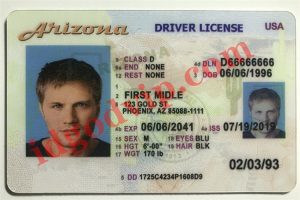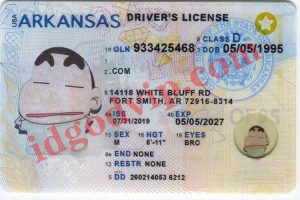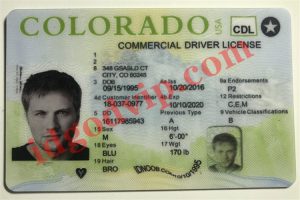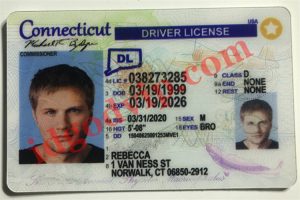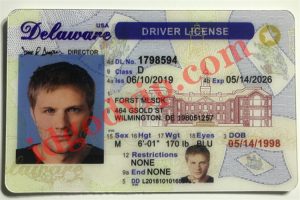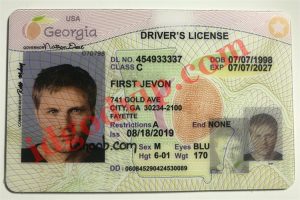Step by Step Instructions for Creating a Fake ID – Copy and Modify Your Card Part 2
Stage 4: Photoshop Repair 1
Photoshop Repair 1
In this step, we’ll remove excess text and remove any imperfections.
Open your output in Photoshop. In this model, we’ll change the “ID Type” part of the card to “Fully Licensed” – that’s your thought process about making a fake id, right?
Select the Clone Stamp Tool and Alt-click the area around the text you want to replace. You may have to change the brush size to fit the area you are cutting (this is done from the toolbar at the top). Work piece by piece, making sure the area you alt-click has a comparable tone/surface to the base behind the text. Then, click near the text to replace it.
After eliminating all the text (actually, its last bit. The copied text looks horrible after inspection), use the type device to fill it. You should try to match the text style to your id card fake . If you can’t, Helvetica or Helvetica Condensed are great options for getting real-looking text styling.
Feel free to use a Clone Stamp device to replace any imperfections or openings in the ID, such as areas in a photo where certain tones may be dropped. One option for cloning stamps is the Marquee Selection Tool (Console Alternate Route M). For areas that are easier to fix (like openings in text or a strong variety base), just pick a point close to it and reorder.
Stage 5: Photoshop Repair 2
Photoshop Repair 2
This step was supposed to be Photoshop Fixing 1, but it wasn’t. You should make up for the shortcomings I left behind.
What we’re going to do now is replace the header surface, and some other dividers or base bars that won’t go through the output. Notice the picture sync 3, the blue bar on the picture looks a little scary? We’ll fix this now so it doesn’t look out of date when you print it.
First, find what you want to fix. If you’ve replaced text on it, go to the “Layers” tab in the upper right corner, and place your eyeball close to the specific message layer to make it less noticeable. What you’re going to do is to repeat the past errand of cloning the base onto the old scanning fake id in these areas. This is why Phase 4 should begin. However, that’s okay, the practice is great.
Then, figure out how to choose the box. If it doesn’t adjust the corners, this should be easy. Just select your checkbox to identify the device and display the area.
For the various modes, keep asking and figure it out yourself anyway. Set your top key to a sort of dull blues on the title (use the eyedropper tool and capture where the variety is). Set the base tint to white.
Get a goniometer. For those new to Photoshop, it’s hidden behind a paint bucket mechanism. Go to Gradient Options on the top toolbar and choose Radial Gradient. Then, this time, on a similar board, set the Gradient Type to Foreground to Background. Make sure you actually check the crate, drag a line from above the crate’s focal point to below its bottom. Opt for golden rounded slopes throughout the box, with no excess relentless white.
Then you need to add a sample overlay. What I did was make another image about 10 x 10 px, define a curved dark border on it, and do Edit->Define Pattern. I then limited the titles to different layers by selecting, copying, erasing and pasting. It will be stuck on another layer – just row it back to its unique position. For now, right align on a new layer and go to Blending Options. Select Pattern Overlay, then choose your most recently made example. Lower the Opacity to a nice level (10% looks good) and then it’s gone. Go ahead and intervene with it to achieve the desired impact. Recall that once the card is printed and covered, the subtleties in it are less obvious.
A way to rehash any other boxes on this page that need fixing. From then on, unhide any text layers you’ve overlaid recently, rearrange the picture into the white box, and make any desired final details on the layout.
Add Brief Posture Query Notes Download
Stage 6: Printing
Print
Now that you have a nice working format, now is the ideal time to turn it into a scannable fake id card. Take your Teslin/Artisyn paper and place it on the plate. Depending on your printer model, you may need to change the sliders on the board to align with your paper size (that is, you should buy 4×6 perforated Teslin paper). Make sure the Teslin paper you buy is suitable for your printer type, whether inkjet or laser.
Before printing the stencil on Teslin, you may need to do a few tests on standard 4 x 6 paper to properly adjust it to fit perfectly in the perforated area. Resize and focus the picture.
After making the exact adjustments, go to Photoshop and click Print Preview -> Page Setup. Under Paper Size, select 4×6 and click OK. Click Print and go to Properties on the following screen. Set it to Photo Print – Borderless, and print.
Don’t eject the card from the hole punch when you’re done. We actually need to print the rest. Really polite, did I specify the rear? .
For the back of a scannable fake id card, it’s basically what rehash uses to make the front layout. When done, flip the Teslin paper over and put it back in the printer. Print again.
You can now pop the card out of the hole. If the layout doesn’t fit perfectly in the pierced area, use a scalpel blade and a ruler or scissors to manage its shape. Assuming you have a few points to cut, that’s okay, the length is the same length that looks great when you’re done.
Add Brief Posture Query Notes Download
Stage 7: Lamination
cover
The next stage is to cover your card. The explanation for our use of Teslin paper instead of plain paper is that the Teslin sticks more clearly to the sack when covered. This will prevent your card from shattering.
When using a laminator, you need a laminator that can handle the thickness of the cover package you are using. Try using one that recognizes about 7 million, ideally 10. It also has to be hot covered, not cold covered. A good quality laminator will give better results.
Turn on your laminator and let it heat up.
While heating, place the freshly printed stencil into the overlay bag, making a fake id card with the highest point against the crease. Assuming the lid bag slides into the laminator, this will save you from cutting important parts of the ID. You can also use a limited amount of super glue on the back of the card to secure it.
Once the laminator is ready, place the card in the crease first. When it appears, give it a short cooldown before handling or twisting it. If the id card fake card comes out floppy or the overlay doesn’t seem to stick, run it through the laminator again.
Add Brief Posture Query Notes Download
Stage 8: Finish the work
last little detail
last little detail
When your card comes out, you may need to cut and sand the edges of the cover. Your surgical tools, ruler, scissors, and sandpaper will do. In any case, be careful with sandpaper as you may find the edges of the fake id turn white.
When you’re happy with your project, you can add a multi-dimensional image overlay (shown below). Simply peel and paste, focusing on arranging it. To prevent air from rising from the molding under the overlay, do this in the direction of the vacuum. If you don’t have a vacuum chamber to work with, or don’t have access, just work your fingers side by side while taking advantage of eliminating the air underneath. This might be fun. This is also a valid reason why you should buy different visualization overlays.
If there is still air rising under the multi-dimensional image, use the back of the blade or the moving pins to press them out.
Finally, if you think your card should be scannable fake id, get out your attractive stripe encoder. Next, you need to sort out what happens next based on the fact that I never finished it.
Congratulations, you are done.
